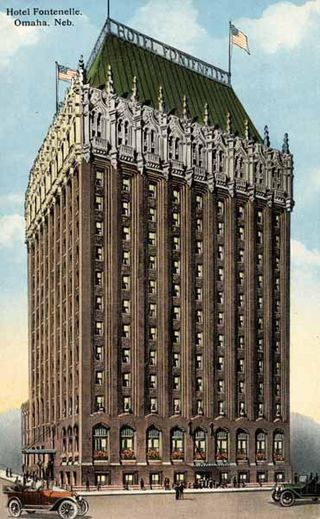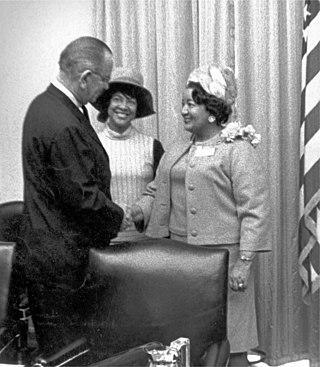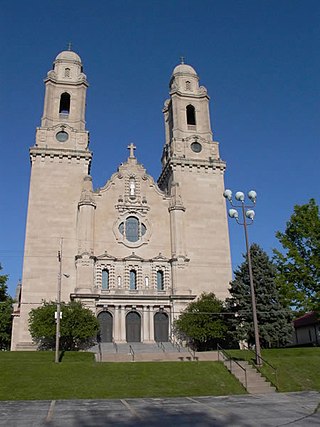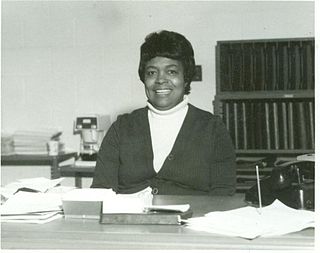Related Research Articles

Creighton University is a private research university in Omaha, Nebraska. Founded by the Society of Jesus in 1878, the university is accredited by the Higher Learning Commission. In 2015 the university enrolled 8,393 graduate and undergraduate students on a 140-acre (57 ha) campus just outside of downtown Omaha. It is classified among "R2: Doctoral Universities – High research activity". It comprises nine undergraduate, graduate, and professional schools and colleges, including a law school, medical school, dental school, pharmacy school, nursing school, and business school. The university operates the Creighton University Medical Center. It has a second campus focused on health sciences located in Phoenix, Arizona.

North Omaha is a community area in Omaha, Nebraska, in the United States. It is bordered by Cuming and Dodge Streets on the south, Interstate 680 on the north, North 72nd Street on the west and the Missouri River and Carter Lake, Iowa on the east, as defined by the University of Nebraska at Omaha and the Omaha Chamber of Commerce.
Significant events in the history of North Omaha, Nebraska include the Pawnee, Otoe and Sioux nations; the African American community; Irish, Czech, and other European immigrants, and; several other populations. Several important settlements and towns were built in the area, as well as important social events that shaped the future of Omaha and the history of the nation. The timeline of North Omaha history extends to present, including recent controversy over schools.
The civil rights movement in Omaha, Nebraska, has roots that extend back until at least 1912. With a history of racial tension that starts before the founding of the city, Omaha has been the home of numerous overt efforts related to securing civil rights for African Americans since at least the 1870s.

The history of Omaha, Nebraska, began before the settlement of the city, with speculators from neighboring Council Bluffs, Iowa staking land across the Missouri River illegally as early as the 1840s. When it was legal to claim land in Indian Country, William D. Brown was operating the Lone Tree Ferry to bring settlers from Council Bluffs to Omaha. A treaty with the Omaha Tribe allowed the creation of the Nebraska Territory, and Omaha City was founded on July 4, 1854. With early settlement came claim jumpers and squatters, and the formation of a vigilante law group called the Omaha Claim Club, which was one of many claim clubs across the Midwest. During this period many of the city's founding fathers received lots in Scriptown, which was made possible by the actions of the Omaha Claim Club. The club's violent actions were challenged successfully in a case ultimately decided by the U.S. Supreme Court, Baker v. Morton, which led to the end of the organization.
Preston Haynes Love was an American saxophonist, bandleader, and songwriter from Omaha, Nebraska, United States, best known as a sideman for jazz and rhythm and blues artists like Count Basie and Ray Charles.

Culture in North Omaha, Nebraska, the north end of Omaha, is defined by socioeconomic, racial, ethnic and political diversity among its residents. The neighborhood's culture is largely influenced by its predominantly African American community.

The Great Plains Black History Museum currently resides on the first floor of the historic Jewell Building in North Omaha, Nebraska. It was formerly located at 2213 Lake Street in the Near North Side neighborhood in North Omaha. It was housed in the Webster Telephone Exchange Building, which is listed on the National Register of Historic Places. A nationally renowned institution for more than 40 years, the museum includes more than 100,000 periodicals, manuscripts, photographs and research materials. The museum currently conducts programs and presents exhibits throughout Omaha, the State of Nebraska, regionally and nationally upon request.

Mildred D. Brown was an African-American journalist, newspaper publisher and leader in the Civil Rights Movement in Omaha, Nebraska. Part of the Great Migration, she travelled from Alabama via New York and Des Moines, Iowa. In Omaha, she and her husband founded and ran the Omaha Star, a newspaper of the African-American community.
The timeline of racial tension in Omaha, Nebraska lists events in African-American history in Omaha. These included racial violence, but also include many firsts as the black community built its institutions. Omaha has been a major industrial city on the edge of what was a rural, agricultural state. It has attracted a more diverse population than the rest of the state. Its issues were common to other major industrial cities of the early 20th century, as it was a destination for 19th and 20th century European immigrants, and internal white and black migrants from the South in the Great Migration. Many early 20th-century conflicts arose out of labor struggles, postwar social tensions and economic problems, and hiring of later immigrants and black migrants as strikebreakers in the meatpacking and stockyard industries. Massive job losses starting in the 1960s with the restructuring of the railroad, stockyards and meatpacking industries contributed to economic and social problems for workers in the city.
Racial tension in Omaha, Nebraska occurred mostly because of the city's volatile mixture of high numbers of new immigrants from southern and eastern Europe and African-American migrants from the Deep South. While racial discrimination existed at several levels, the violent outbreaks were within working classes. Irish Americans, the largest and earliest immigrant group in the 19th century, established the first neighborhoods in South Omaha. All were attracted by new industrial jobs, and most were from rural areas. There was competition among ethnic Irish, newer European immigrants, and African-American migrants from the South, for industrial jobs and housing. They all had difficulty adjusting to industrial demands, which were unmitigated by organized labor in the early years. Some of the early labor organizing resulted in increasing tensions between groups, as later arrivals to the city were used as strikebreakers. In Omaha as in other major cities, racial tension has erupted at times of social and economic strife, often taking the form of mob violence as different groups tried to assert power. Much of the early violence came out of labor struggles in early 20th century industries: between working class ethnic whites and immigrants, and blacks of the Great Migration. Meatpacking companies had used the latter for strikebreakers in 1917 as workers were trying to organize. As veterans returned from World War I, both groups competed for jobs. By the late 1930s, however, interracial teams worked together to organize the meatpacking industry under the United Packinghouse Workers of America (UPWA). Unlike the AFL and some other industrial unions in the CIO, UPWA was progressive. It used its power to help end segregation in restaurants and stores in Omaha, and supported the civil rights movement in the 1960s. Women labor organizers such as Tillie Olsen and Rowena Moore were active in the meatpacking industry in the 1930s and 1940s, respectively.
The Near North Side of Omaha, Nebraska is the neighborhood immediately north of downtown. It forms the nucleus of the city's historic African-American community, and its name is often synonymous with the entire North Omaha area. Originally established immediately after Omaha was founded in 1854, the Near North Side was once confined to the area around Dodge Street and North 7th Street. Eventually, it gravitated west and north, and today it is bordered by Cuming Street on the south, 30th on the west, 16th on the east, and Locust Street to the north. Countless momentous events in Omaha's African American community happened in the Near North Side, including the 1865 establishment of the first Black church in Omaha, St. John's AME; the 1892 election of the first African American state legislator, Dr. Matthew Ricketts; the 1897 hiring of the first Black teacher in Omaha, Ms. Lucy Gamble, the 1910 Jack Johnson riots, the Omaha race riot of 1919 that almost demolished the neighborhood and many other events.
African Americans in Omaha, Nebraska are central to the development and growth of the 43rd largest city in the United States. Black people are first recorded arriving in the area that became the city when York came through in 1804 with the Lewis and Clark expedition and the residence of Jean Baptiste Point du Sable who lived at Fort Lisa for an extended period in 1810. There were also enslaved Black people at the Church of Latter Day Saints Winter Quarters in 1846. The first free Black settler in the city arrived in 1854, the year the city was incorporated.

Christianity in Omaha, Nebraska has been integral to the growth and development of the city since its founding in 1854. In addition to providing Christian religious and social leadership, individually and collectively the city's churches have also led a variety of political campaigns throughout the city's history.
The Omaha and Council Bluffs Railway and Bridge Company, known as O&CB, was incorporated in 1886 in order to connect Omaha, Nebraska with Council Bluffs, Iowa over the Missouri River. With a sanctioned monopoly over streetcar service in the two cities, the O&CB was among the earliest major electric street railway systems in the nation, and was one of the last streetcar operators in the U.S., making its last run in 1955.

The Omaha Star building is located at 2216 North 24th Street in North Omaha, Nebraska. As the site of publication of TheOmaha Star newspaper since 1938, the building is notable for its long service to Omaha's African-American community and its connections to the civil rights movement in the city. In recognition of its significance, the building was listed on the National Register of Historic Places in 2007.

Bertha Calloway was an African-American community activist and historian in North Omaha, Nebraska. The founder of the Negro History Society and the Great Plains Black History Museum, Calloway won awards from several organizations for her activism in the community and Nebraska. "I Love Black History" was the former website for the Bertha W. Calloway Center for the Research and Study of African and African-American History, Art, and Culture and the Great Plains Black History Museum before it.

TheOmaha Star is a newspaper founded in 1938 in North Omaha, Nebraska, by Mildred Brown and her husband S. Edward Gilbert. Housed in the historic Omaha Star building in the Near North Side neighborhood, today the Omaha Star is the only remaining African-American newspaper in Omaha. It may be the only newspaper in the United States started by an African-American woman.
Edward Danner was a butcher and state legislator in Nebraska. A member of the Nebraska state legislature from 1963 until his death in 1970, he represented North Omaha in the state senate. The only African American state senator in Nebraska at the time, he advocated for civil rights and equal protection under the law. He was a Democrat.
References
- ↑ Taylor, Q. (2007) The Black Past: Remembered and Reclaimed - Timeline. Seattle: University of Washington.
- ↑ Nugent, W.T.K. and Ridge, M. (1999) The American West: The Reader. Indiana University Press. p 298.
- ↑ "In search for saints in our time" Archived 2007-05-06 at the Wayback Machine , Creighton University. Retrieved 12/4/07.
- ↑ Amy Helene Forss, "Mildred Brown and the De Porres Club: Collective Activism in Omaha, Nebraska’s, Near North Side, 1947-1960,” Nebraska History, 91 (2010): 190-205. [usurped]
- ↑ Forss, A.H. "Shining Star" Archived 2008-10-10 at the Wayback Machine , Omaha Reader . 25 June 2008. Retrieved 8/2/08.
- ↑ "A Street of Dreams," Nebraska Public Media. Air Date, 08/01/1994. Retrieved April 8, 2024.
- ↑ Graves, S. (2004) Black history strong at Creighton, Archived 2007-02-28 at the Wayback Machine The Creightonian Online. 83(18).
- ↑ "" Archived 2008-05-28 at the Wayback Machine Winter: The magazine of Creighton University. 12;2. Winter 1995-96. p 5.
- ↑ "" Archived 2008-05-28 at the Wayback Machine Winter: The magazine of Creighton University. 12;2. Winter 1995-96. p 8.
- ↑ (n.d.)Mildred Brown Archived 2014-06-06 at the Wayback Machine Nebraska Studies.